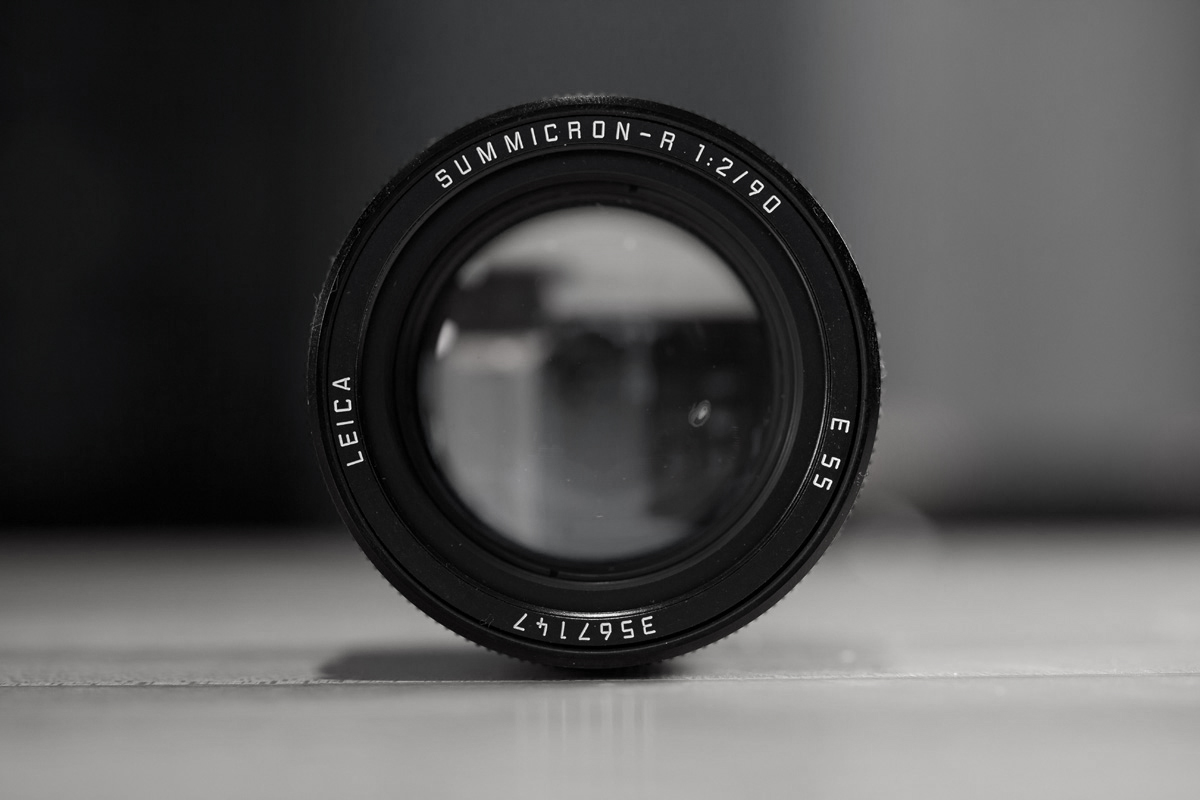
Leica APO Summicron-M 90mm f/2 ASPH Lens Review
Introduction
Leica APO Summicron-M 90mm f/2.0 ASPH lens is one of Leica’s current model of telephoto lenses. It is a medium telephoto lens placed between the 75mm and 135mm lenses in production.
The lens has a 55mm filter thread and five elements in 5 groups with an aspherical coating on one lens surface to reduce chromatic aberrations. APO stands for apochromatic aberration which is virtually eliminated through lens design.
Leica APO Summicron-M 90mm f/2.0 ASPH lens is perhaps the most popular telephoto focal length used primarily for portraiture. This focal length helps to enhance the bokeh around the subject to create a clear separation from the background.
Leica APO Summicron-M 90mm f/2.0 ASPH lens means it is a fast f/2.0 lens. Leica camera has produced faster lenses in the past like Leica Summilux-M 80mm f/1.4 lens but the combination of its fast speed with an apochromatic optical design makes Leica APO Summicron-M 90mm f/2.0 ASPH lens a unique lens in Leica camera’s lineup of lenses.
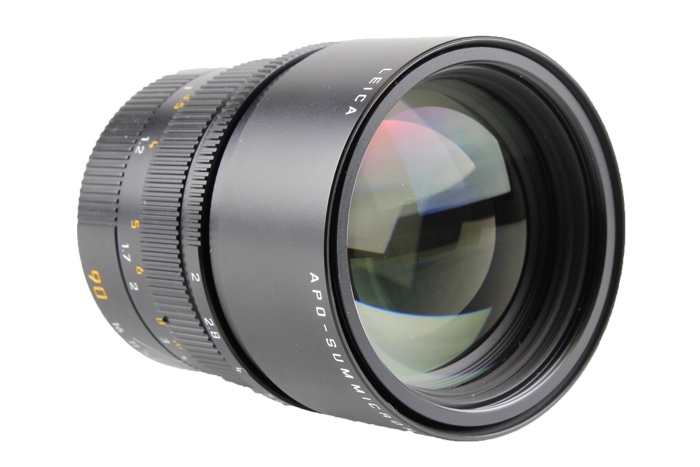
Leica APO Summicron-M 90mm f/2.0 ASPH lens is priced significantly higher than the previous versions of 90mm lenses. Leica has produced lenses with varying speeds, for example, Leica Elmarit-M 90mm f/2.8 lens was produced between the years 1959 through 1974 which was one of the best lenses ever made at this focal length.
Currently, Leica produces Leica Summarit-M 90mm f/2.4 lens with f/2.4 and f/2.5 which are a little slower than Leica APO Summicron-M 90mm f/2.0 ASPH lens. Summarit lenses don’t feature APO or aspherical coating on lens surface which contribute to lower pricing by Leica.
Leica Summarit-M 90mm f/2.4 lens or the previous version which had f/2.5 are considered entry level lenses often prompted as par with Leica APO Summicron-M 90mm f/2.0 ASPH lens. For most users, the difference is indistinguishable between photographs taken by both lenses. However, to a trained eye, the difference between the two lenses is very clear. You can read our review of our lens comparisons of Leica Summarit-M 90mm f/2.4 Lens and Leica APO Summicron-M 90mm f/2.0 ASPH lens on our website.
Leica APO Summicron-M 90mm f/2.0 ASPH lens was designed by Peter Karbe who was also the designer of Leica camera’s legendary Leica Noctilux-M 50mm f/0.95 ASPH. lens. In a lot of ways, Leica APO Summicron-M 90mm f/2.0 ASPH lens reflects his approach to lens design which is sharp, clear and very accurate optics that results in distortion-free, apochromatic lenses.
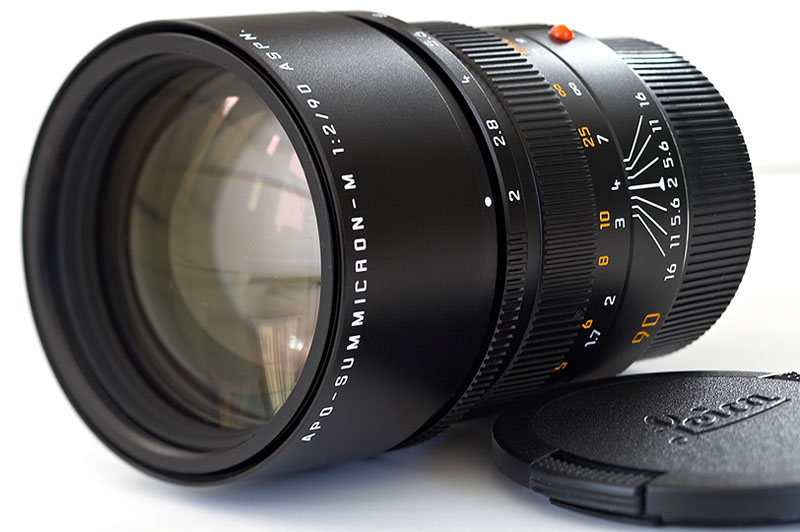
Setting the Benchmark for Optical Design
Leica APO Summicron-M 90mm f/2.0 ASPH lens is very sharp without any ” strong character” rendering images much in the spirit of modern lens design marked with accuracy, sharpness and exquisite detail in rendition. Leica camera’s approach to highly sophisticated optics engineering perhaps minimizes the variations in lens elements creating more accurate and distortion-free lenses. In another word, the days of the characteristic “Leica look” associated with lens designs of Dr.Walter Mandler where hand ground lens elements of each lens resulted in subtle differences in the image renditions are long gone.
While, we are in an era of low-cost manufacturing methods for producing lenses via computer-aided design and manufacturing has made most lenses indistinguishable in the way they render images, Leica APO Summicron-M 90mm f/2.0 ASPH lens stands as the benchmark with which excellent lens design and engineering are judged.
I would say even seasoned professionals would be hard-pressed to tell the difference between photographs taken with lenses from different lens manufacturers. As I look at the images captured with Leica APO Summicron-M 90mm f/2.0 ASPH lens, I can clearly see the low distortion, lack of chromatic aberration, accurate color rendition setting it apart from other lenses in the market. For the apparent reasons, Leica APO Summicron-M 90mm f/2.0 ASPH lens does cost more and is worth the additional investment if you are genuinely committed to obtaining superior images with your camera.
I consider Leica lenses as boutique lenses carrying decades of refinement and dedication to quality that is unmatched by the competition. Due to its high price tag and lack of autofocus, Leica APO Summicron-M 90mm f/2.0 ASPH lens appeal will be limited to a small group of Leica enthusiasts and photography professionals, but that does not take away from the superb quality of this legendary lens. marketing strategy this would make sense and mirrors the way car manufacturers copy one another’s designs, almost to the point where minor differences can only distinguish models. As we can see today, lens manufacturers are taken a similar approach.
Although I don’t commend the efforts of Leica camera’s marketing strategy with the desire to appeal to wide range of customers through Leica Summarit lens line, company’s effort in pushing optics engineering boundaries with lenses like the new Leica Noctilux-M 75mm f/1.25 ASPH lens is a commendable one. For me, Leica Summarit-M 90mm f/2.4 lens is Leica Camera’s way to offer a product that mirrors the way other lens manufacturers copy one another’s designs in the hopes of capturing a larger market share from the lens market. Ultimately, producing low-cost “me-too” products in the hopes of attaining better bottom line results tarnishing company image of many lens manufacturers.
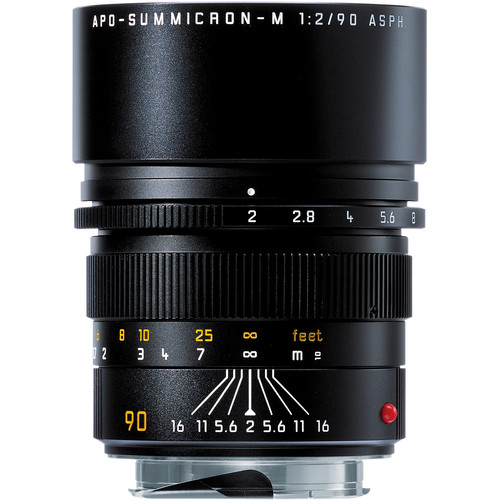
Ushering in a New Era
It is the way the world is today; we just have to accept it. Yesteryears, when most lens companies were playing catch up with oligopolies of the lens and camera industry with companies, likes Zeiss and Leica Camera setting the standard of excellence for the rest to follow has given way to cheap lenses overflowing from China.
This should not come as a surprise to as it happened for most the luxury couture house of Europe with designer clothing establishments which catered only to an affluent clientele has an abundance of copycats flooding the market. As a consequence Luxury houses had to adjust to the new market condition by having their goods produced in third world countries and opening up to middle-class stay competitive. In a similar vein, we must embrace the changing times for the optics industry.
The competition will be fierce and the companies that will survive in the long run will be innovative ones with products that stand out from the rest. This is why products such as Leica APO Summicron-M 90mm f/2.0 ASPH lens or the new Leica Noctilux-M 75mm f/1.25 ASPH lens are so monumentally important because photographers, professionals will always demand high-quality products. This is what you are getting when you purchase a Leica Camera product. In a way, you are making a safe investment by buying a Leica APO Summicron-M 90mm f/2.0 ASPH lens because as history demonstrates the value of Leica lenses will always retain their value despite the changing landscape of the lens market.
A Word About Price
Some photographers are content as the bored teenagers are with their smartphones snapping images to share on their social media platforms. While the technology will make smartphone more capable cameras with features borrowed from image editing software like Adobe Lightroom and Photoshop the truth is there is a quality of refinement that comes from composing photographs through the use of a high-quality lens. Those images shared on social media platforms viewed on tiny smartphone screens will be forgotten in a matter of days no matter how pleasing they are but not for photographs captured with Leica lenses.
When you own a Leica APO Summicron-M 90mm f/2.0 ASPH lens, for example, you take the time to compose your photographs, you then download them to your computer for safekeeping, print it, if you are using a film camera you store the negatives. This is when an image turns into a photograph because with a great lens like the Leica APO Summicron-M 90mm f/2.0 ASPH lens you are able to capture the beauty of life’s colors, the subtleties of a breathtaking landscape, the unique characteristics of a person you take in a portrait. This is why you pay for the difference for a Leica lens because you know what a great lens can do for your photography.
While the competition is busy attempting to replicate the great Leica lenses that span decades, you’ll be rest assured that the investment you made in your lens is for a lifetime. You will cherish a Leica Noctilux-M 50mm f/1.0 lens from geniuses like Dr.Walter Mandler the same way you will look upon your Leica APO Summicron-M 90mm f/2.0 ASPH lens as an artwork.
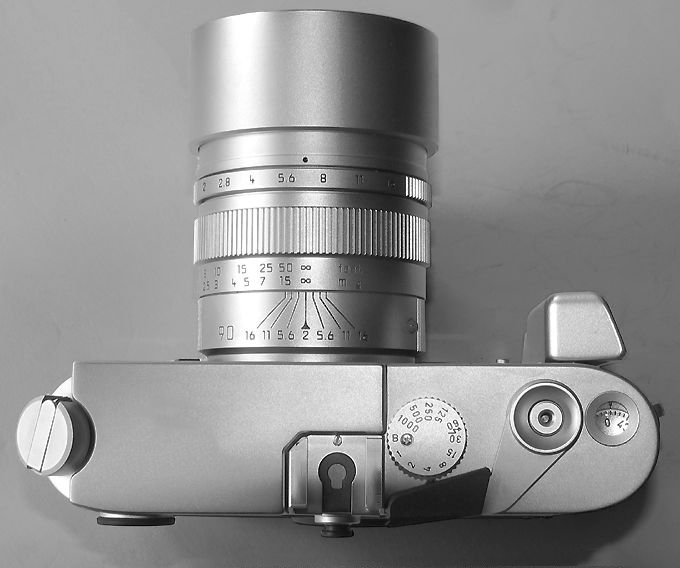
Technology of Know-how
Today, lenses will bear incremental improvements in aperture and sharpness, optimized for digital sensors. I am an emphasızıng this point to highlight the differences in older Leica lens designs from today’s contemporary lenses. Leica lenses of today are unique in their design to provide advantages that go beyond optical achievements. For example, the 6-bit electronic connection circuitry found on Leica APO Summicron-M 90mm f/2.0 ASPH lens will communicate with the modern M rangefinder cameras like the Leica MP240 and the Leica M10 camera to further remove lens distortion that can’t be achieved through optical design. This, in turn, results in a superior lens than a lens of pure optical engineering. All this technological know-how coupled with unmatched quality and compact design sets lenses like Leica APO Summicron-M 90mm f/2.0 ASPH lens apart from the competition.
If you think all lenses are about equal in quality then I invite to look at iconic photographs of the last four decades. If you are seeking to capture images the way famous photographers once did, you may be out of luck. The highly differentiated nature of older lens design helped to tell a story by adding “unique” visual elements to the images they captured. In today’s oversaturated market, however, optical homogeneity is the order of the day.
These days, accuracy and sharpness are the only things lenses seem to offer but not the character that makes photographs stand out in a sea of uploaded images on the internet. If you are after cheap lenses that perform well for the price then you are in a bit of luck because computer-aided manufacturing has helped many companies to produce lenses for a fraction of the of a Leica lens. These lenses are great if you are photographing the bold colors of fruit sellers in India with, but those images will have nothing new to offer to the world of photography because they will lack the quintessential component that is needed to make an image a great photograph which is character.
I choose to use the current version of Leica APO Summicron-M 90mm f/2.0 ASPH lens because the resolving power of the optics of this lens allows me to capture the finer details of skin tones and nuances of the characteristics of a person’s face. As a professional, I would not risk using an inferior lens because I demand the absolute best in quality and performance from my photography equipment.

Legacy of Leica Lenses
Leica APO Summicron-M 90mm f/2.0 ASPH lens has that solid build that has been passed down for decades of lens manufacturing know-how that is synonymous with Leica’s lens culture. Obviously, times change, and profit margins must be maintained.
Some decisions like producing Leica M60 without LCD screen may not be prudent, but Leica has a history of making great lenses which people love and will endure with the passage of time, Leica APO Summicron-M 90mm f/2.0 ASPH lens is no exception.
In the future, there might be a Leica Summilux-M 90mm f/1.4 lens or even a Leica Noctilux-M 75mm f/1.25 ASPH lens pushing the boundaries of optical engineering but for now but for now, Leica APO Summicron-M 90mm f/2.0 ASPH lens is the best Leica camera has to offer in 90mm focal length. Leica Noctilux-M 75mm f/1.25 ASPH lens will set the mark for speed and accuracy for medium format lenses. For professionals, that would be heaven sent because the bokeh and light gathering capabilities of a lens are what helps us to tell a story better.
While the Leica Noctilux-M 75mm f/1.25 ASPH lens will set the mark for speed and accuracy, for a longer telephoto lens, even as a standard portrait focal length Leica APO Summicron-M 90mm f/2.0 ASPH lens is the one that will render incredible bokeh as a portrait lens.

The Competition of Telephoto Lenses
Leica APO Summicron-M 90mm f/2.0 ASPH lens does have some competition although the profit margins of other lens companies are probably so low not to pose any challenge to the market dominance that this Leica lens has over the competition.
For example, Voigtlander APO-Lanthar 90mm f/3.5 (not in production for Leica Mount) and Zeiss Tele-Tessar T* 85mm f/4 ZM Lens priced at $987 USD are two lenses that are somewhat more affordable of an alternative to Leica APO Summicron-M 90mm f/2.0 ASPH lens, but neither has the speed or the characteristics that this Leica Lens offers in this focal length.
The only worthwhile lens to be compared to Leica APO Summicron-M 90mm f/2.0 ASPH lens that was produced by another manufacturer would be Zeiss 85mm f/2.0 lens. This lens was manufactured in Germany, not Japan, and eventually discontinued due to low demand and high manufacturing costs. I do also own Zeiss 85mm f/2.0, but the price has skyrocketed in recent years costing far above the Leica APO Summicron-M 90mm f/2.0 ASPH lens, in essence, there is no competition for this Leica Lens when quality, and speed is taken into consideration.
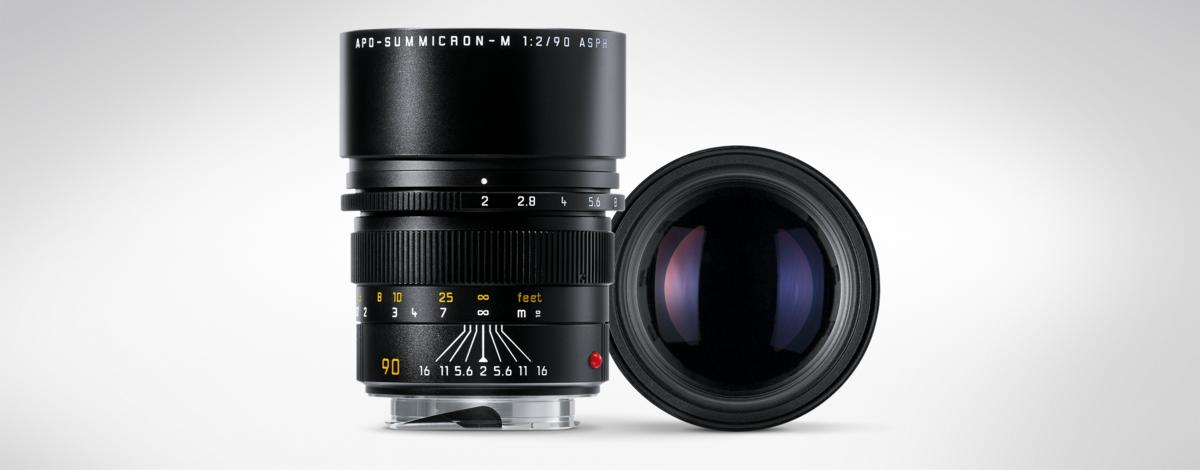
The Experience
As a professional photographer, I use four different versions of Leica 90mm lenses for my work. Each is different creating the “signature look” of the way my photography style conveys stories through the visual medium. I feel Leica APO Summicron-M 90mm f/2.0 ASPH lens is the most versatile lens in my arsenal of photography equipment because it is a fast lens that is very light and delivers incredible detail without any purple fringing. More importantly, Leica APO Summicron-M 90mm f/2.0 ASPH lens helps me to tell my stories in a unique way.
Leica APO Summicron-M 90mm f/2.0 ASPH lens is compact enough to be taken on my many trips. I prefer my lens to be short and light which make this lens fit the bill perfectly. If the diameter of Leica APO Summicron-M 90mm f/2.0 ASPH lens was 60mm and shorter while maintaining its fast speed it could be more favorable as a lens that allows the photographers to blend in those countries where political and social unrest is an everyday occurrence. A Leica lens is a Leica lens, compact, light with incredible optical performance.
I have been asked many times whether buying a Leica APO-Summicron-M 75mm f/2 ASPH lens should precede the purchase of a Leica APO Summicron-M 90mm f/2.0 ASPH lens. The answer is not a simple one. If you are love portraits owning a Leica APO Summicron-M 90mm f/2.0 ASPH lens will definitely have its advantages over the shorter focal length lenses. If you are seeking to purchase an all-around lens for everyday use, Leica APO-Summicron-M 75mm f/2 ASPH lens may just be what one needs. My first choice will always be to have a portrait lens because I like capturing portraits.
On the question of whether to choose a pre-aspherical lens versus the current Leica APO Summicron-M 90mm f/2.0 ASPH lens with aspherical lens elements, it boils down to personal taste. Personally, I love the look that pre-aspherical lenses give with their unique character but for today’s photography having a Leica APO Summicron-M 90mm f/2.0 ASPH lens is a definite advantage.
Portrait photography which I give regular workshops on is a complicated one. On the one hand, we as photographers want to give the most pleasing images of our subjects while keeping an element of naturalness, on the other, we are tempted to be sacrifice aesthetics for realism. For me, portrait photography is a balance of aesthetics epitomized in 1930s golden age of portraiture when George Hurrell captured exquisite portraits of film stars in a dreamy, surreal, glow. Today, Leica APO Summicron-M 90mm f/2.0 ASPH lens gives me the tool I can rely on for capturing accurate skin tones, and colors to be able to construct a photograph with the right proportion of aesthetic elements.

Verdict
The question that a Leica APO Summicron-M 90mm f/2.0 ASPH lens buyer must ask is what he or she intends to use this lens for, if your aim is to photograph beautiful portraits then this lens is for you. If you are traveling and would like a great telephoto lens that you can carry around without being weight down then again this lens is an ideal companion. The question is what does one attempt to achieve by purchasing this lens. If one is satisfied with Summarit 90mm photographs and could not tell the difference from Leica Summarit-M 90mm f/2.4 lens could you possibly justify paying the
I use this lens for architecture, landscape photography as well. In the hands of a professional, it can do wonders. For someone who knows what he is doing with Leica APO Summicron-M 90mm f/2.0 ASPH lens, it is a lens that makes the difference between winning a photography competition and coming in third place. The question is what does one attempt to achieve by purchasing this lens.
Ultimately, the question that one needs to answer is what does one attempt to achieve by purchasing a high-quality Leica lens. If you want a superior lens that you can use for a lifetime this is the lens for you. For those who don’t need a fast lens or one that they may consider upgrading from then Leica Summarit-M 90mm f/2.4 lens will serve fine.
Leica APO Summicron-M 90mm f/2.0 ASPH lens is the lens to purchase if you want to advance your photography because it is a very versatile tool with which you can compose great photographs. As important is the skillset you will need to efficiently use Leica APO Summicron-M 90mm f/2.0 ASPH lens which will require you to attend a photography class or a photography workshop. This lens will only yield great results if you have mastered some of the most important photography techniques and secrets learned over decades of experience. Attending a photography workshop is the best investment you can make in yourself to better your photography skills.
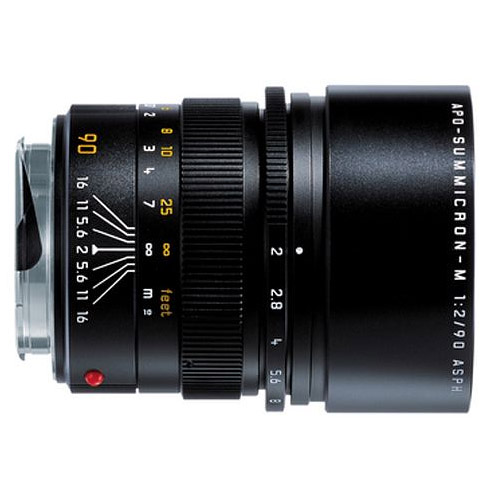
I hope you have enjoyed this review. There are several on our Leica Review website about telephoto lenses and how to use them for best results. I highly recommend you read them to gain an in-depth knowledge of Leica telephoto lenses.
Here are some links to get the best prices on Leica telephoto lenses.
Leica APO Summicron-M 90mm f/2.0 ASPH lens
Leica APO Summicron-M 90mm f/2.0 ASPH lens (USED)
Leica APO-Summicron-M 75mm f/2 ASPH. Lens
Leica APO-Summicron-M 75mm f/2 ASPH. Lens (USED)
Leica Summilux-M 75mm f/1.4 Lens (Used)
Leica Noctilux-M 75mm f/1.25 ASPH. Lens
Leica Summarit-M 90mm f/2.4 Lens
Leica Summarit-M 90mm f/2.4 Lens (USED)
Leica Summarit-M 75mm f/2.4 Lens
Leica Summarit-M 75mm f/2.4 Lens (USED)
Leica Noctilux-M 50mm f/0.95 ASPH. Lens (Silver) (NEW)
Leica Noctilux-M 50mm f/0.95 ASPH. Lens (Black) (NEW)
Leica Noctilux-M 50mm f/0.95 ASPH. Lens (USED)
Leica Noctilux-M 50mm f/1.0 Lens (USED)
For my upcoming 2019 photography workshops, here are the links
We offer photography workshops around the world specializing in Leica cameras and lenses. You are invited to take part in one because what you gain from a dedicated photography workshop for Leica cameras and lenses. The tips and techniques you will learn in these workshops will take your photography to the next level also will stay with you for a lifetime. We look forward to hearing from you.
As always, if you have any comments please write to us.
Thank you
Oz Yilmaz
Leica Review Team
